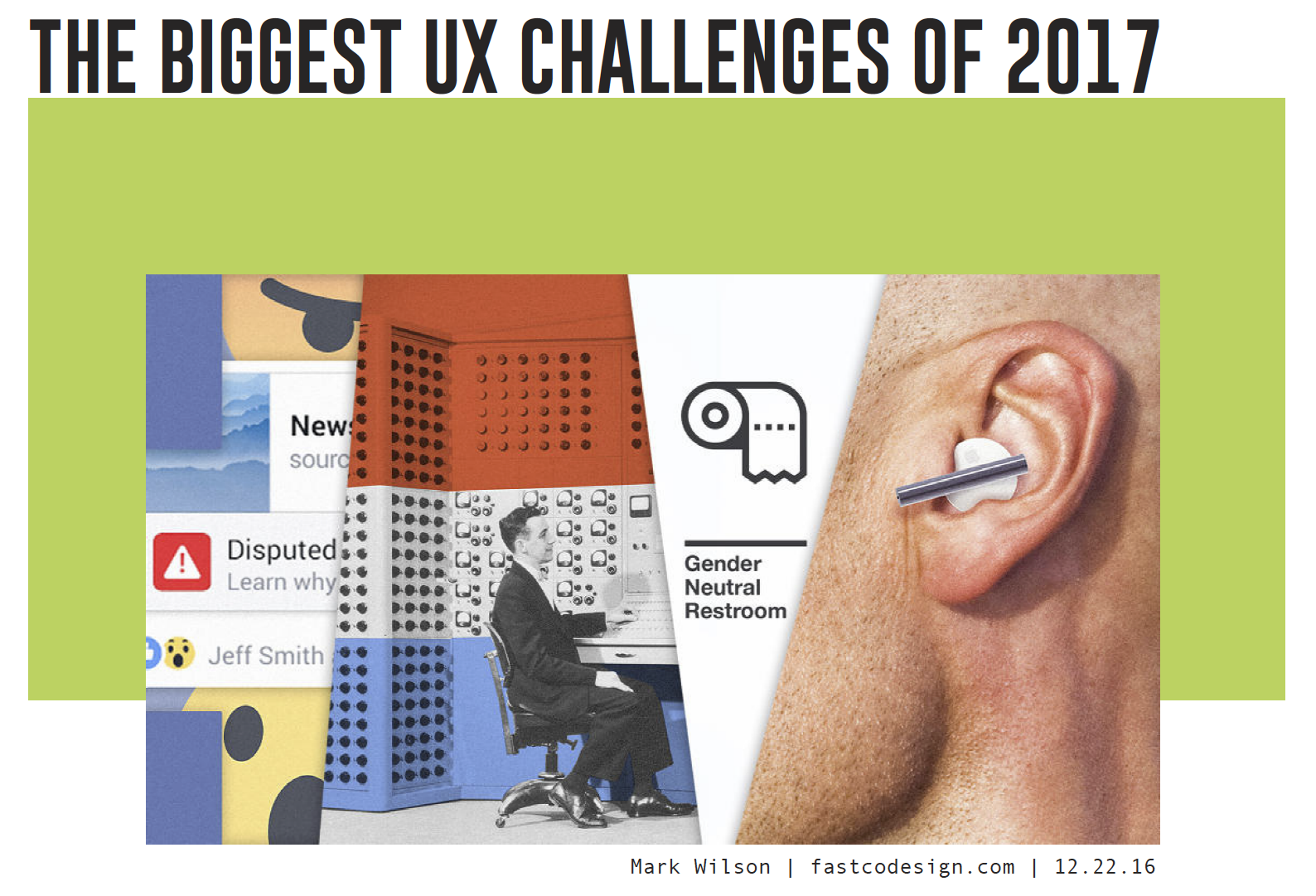“The Biggest UX challenges of 2017” is an article published by Co. Design and written by Mark Wilson. It talks about how we as UX designers can make a difference to the social justice scenario of the world. He firmly believes that UX/UI is not only about redesigning a new app or making the checkout process more intuitive. It is bigger than that. It’s not that small solutions can’t have big impacts; it’s that some small solutions are just small solutions. And we all need to get to work solving big problems again.
He then lays out the biggest challenges for UX in 2017. They are not solutions to the problems but they are the potential areas that a designer can work on for the sake of social justice.
1. Fixing Fake News
As stated by the author of this article, fake news is an epidemic! It is a problem that exists in the core of how the internet works. There is an unending loops of misinformation getting viral among users before it is determined to be misinformation. The results of which can be drastic. Facebook has very recently started taking measures to battle this. Even though at this point it is at a novice level, the developments will be interesting to observe. This year, we need to see every platform on the internet assess its culpability in this problem.
2. Surfacing Manipulation and Discrimination in Algorithms
We live in a digital world of extreme convenience. Complex machinery crunches numbers in the background, taking our preferences into account before shaping our digital world. The article argues why transparency is important in how these algorithms work especially because machine learning is allowing these algorithms to self-train their own biases. A lack of transparency also means we have no way to fix things when they go wrong.
3. Chatbots that have something to say, both to us and each other
The article argues about how we need to make the AI sound more like a computer and limit its functionality. The author believes that its not important for the AI to have full blown conversation with the user. On the other hand he also states that the chatbots should be able to interconnect with each other, at least the same ease of an iPhone that can run Gmail.
4. Bursting the Social Media Bubble
We’re part of a society splitting in two, and social media is failing to bridge that divide. It’s letting us live in bubbles leading directly to lack of exposure. Users always have the option to join groups that make them uncomfortable or be follow people who they don’t agree with to be aware but we as UX designers don’t want our users to make that extra effort. Hence, we need to come up with a system that is neither painting an illusion of like-mindedness nor presenting users with a 24/7 partisan fight.
5. Ensuring our interfaces work for us, not against us
The author spoke about the term “Dark Patterns” and how they are not bad UI but evil UI. They’re built to protect corporate interests and improve bottom lines – without the user even realizing it. We as UX designers are user advocates and we should be able to empower the user and offer them the best, clearest information possible.
I agree with mostly all the pointer stated in the article. I just don’t see how making chatbots sounding more like a computer would help the user. Yes, it would add constraints, and save the user time but we do need that empathy from these new AIs in order for us to trust them. Their friendly, conversational, almost human tone, makes the users comfortable using them. I’m not saying that this should be the case with all chatbots. The major players like Siri (Apple) and Alexa (Amazon) are doing a great job but this need not be included in the vast majority of AI bots and assistants.
